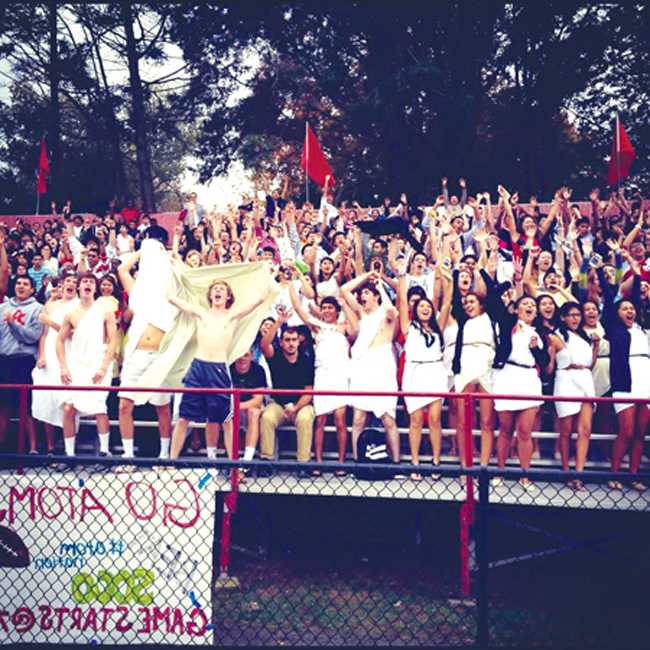Baby powder and flour is thrown into the air. A fight almost breaks out after a volleyball game. School spirit is alive and present, but has it been taken too far?
“As a student, I do see how we’ve gotten a little crazy at sporting events,” senior Jenny Ha said. “I feel bad when we cheer against the other team, but we never mean it because it’s just a joke.”
With name-calling and jokes about appearances, negative cheering has always been present in the student section. But with recent measures having to be taken, some worry that this year’s students have become too obnoxious.
“I definitely think parents get uncomfortable when we direct mean cheers to the other team,” junior Eric Mejean said. “I’ve seen some nasty looks in our direction because of some of the comments we make.”
At the recent Play for the Cure volleyball game against West Potomac, the student section and West Potomac players were yelling insults towards each other. After the game, a fight almost broke out between fans and the players. The conflict continued later as students and players from both schools exchanged hateful Twitter posts. The next day, AHS and West Potomac administrators investigated the situation and felt that both parties dealt with it appropriately.
Head volleyball coach Jan Austin was not aware of the events after the West Potomac volleyball game.
“I didn’t hear anything until I came into school the next day and some of my students told me about what happened,” Austin said. “Volleyball is the only sport where the crowd, players, and coaches can’t question the referee too much, so I think the crowd was really interactive, although some could call it disrespectful.”
“I’m very concerned about the cheers that happen at games,” Director of Student Activities Karl Kerns said. “I don’t understand the negativitity. I think a lot of it comes from college athletics, because students watch the games and see the student section with all these crazy cheers and they pick up on it. Another thing is social media, because students can see something on Youtube and do it at a game, like powder-throwing.”
Students also caught administrator’s attention at the football game at Woodson HS when they threw baby powder and flour into the air for a whiteout. FCPS banned the act of powder-throwing shortly after because of the health risks and the risk to players. Police also sent a notice to schools about the new rules.
“When I first saw it, I thought it was a fire under the bleachers,” Kerns said. “We weren’t the only school that did it that night; Westfield, Lake Braddock and Robinson did it as well.”
The idea came from senior James Terrell when he found a video of another high school doing the powder-throwing at a whiteout. He made a Facebook event and invited several students to spread the word.
“I thought only a couple kids would actually do it, but it ended up being awesome,” Terrell said. “I was actually kind of proud that it made that much of an impact to get it banned.”
“Personally, I don’t think the powder banning should have been banned, I enjoyed that and I thought it was awesome,” junior Eric Mejean said. “But I do see the county’s logistics behind banning it due to safety.”
“Students may not have several health problems, but there may be spectators at games for example that will have a respiratory problem if there is all this powder in the air,” Kerns said. “If I was a parent, I’d be upset if I got covered in it. It’s also bad for the players because if the wind had been blowing, it could have gotten on the field and interfered with the game.”
Negative cheering occurs not only from AHS’ student section, but sometimes towards AHS athletes as well.
“The worst fan section was at the Woodson volleyball game when parents were the ones doing the negative cheering at us,” Ha said. “But when students do it, they just cheer because it’s funny to them.”
Austin encourages her players to focus on the game and block out the fans.
“I tell my team to play their game no matter what happens with outside forces,” Austin said. “If you’re an athlete, you can play under any conditions.”
Kerns encourages students to approach him or the leadership class about any ideas for school spirit at athletic events. He also mentioned the possibility of an activities or athletics council where students would discuss issues such as sportsmanship or increasing attendance.
“You should be able to go to a game and have fun and be entertained, not be in danger or attacked by profanity,” Kerns said. “I shouldn’t have to speculate about bringing my kid to a game because I might have to get up and talk to the student section during a game. That’s not what sports are about.”









